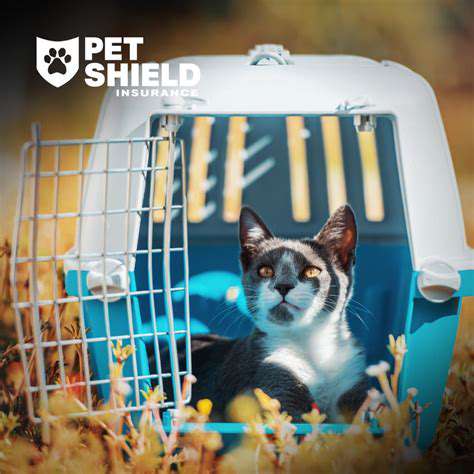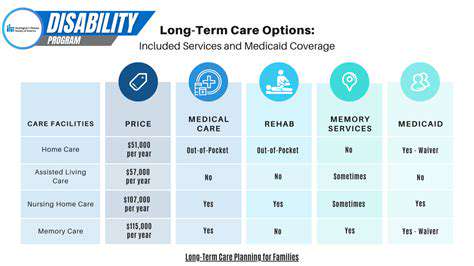Choosing the Right Pet Carrier for Airline Travel

Airline Regulations and Carrier Requirements
Airline Regulations Regarding Pet Carriers
Understanding airline regulations surrounding pet carriers is crucial for a smooth and stress-free travel experience for both you and your furry companion. Different airlines have specific requirements regarding carrier size, materials, and security features. These regulations are in place to ensure the safety and well-being of both the pet and other passengers onboard the aircraft. Failing to adhere to these guidelines could result in your pet being refused boarding, or even in additional costs for expedited solutions.
Many airlines specify dimensions for pet carriers, often including restrictions on length, width, and height. These dimensions are essential to ensure the carrier fits comfortably in the designated areas within the aircraft cabin. Some airlines may also have specific requirements for the materials used in the construction of the carrier, such as ensuring it's sturdy enough to prevent injuries or damage during flight. Additionally, some airlines may require the carrier to have secure latches or closures to prevent accidents or injuries during transport.
Carrier Requirements for Different Animal Types
The size and type of pet carrier needed will vary depending on the size and breed of your animal. Large breeds, such as Great Danes or Mastiffs, will require larger carriers to accommodate their size comfortably. Small breeds, such as Chihuahuas or Pomeranians, may fit into smaller carriers, but these should still be adequate for their safety and comfort during the flight. Additionally, carriers for cats and other small animals will differ in size and design to accommodate their specific needs. Always consult the airline's specific guidelines to ensure you're providing appropriate accommodations.
Different airlines might also have specific requirements for certain animal types, such as reptiles or birds. These types of animals may require specialized carriers that meet their unique needs. For example, reptiles might need carriers with specific temperature control features, while birds might require carriers with ventilation systems to ensure proper air circulation.
Carrier Security and Safety Standards
The safety and security of your pet carrier are paramount during air travel. Secure closures and latches are essential to prevent the carrier from opening during flight, thereby ensuring the animal's safety and preventing any potential disturbance to other passengers. The carrier should also be constructed from durable materials that can withstand the rigors of air travel. Additionally, some airlines may require specific markings or labels on the carrier for identification purposes. Understanding these security and safety standards is crucial for ensuring a smooth travel experience for your pet and preventing any unfortunate incidents.
Inspecting the carrier for any potential damages or weaknesses before boarding is also important. A damaged carrier could compromise your pet's safety and increase the risk of incidents during the flight. Thorough preparation and adherence to airline guidelines will contribute to a stress-free and secure journey for both you and your beloved pet.
Cleaning and Maintenance for Long-Term Use

Essential Cleaning Practices
Regular cleaning is crucial for maintaining a clean and healthy environment. Thorough cleaning removes dirt, grime, and bacteria that can accumulate over time, leading to potential health risks. Focusing on high-touch areas like doorknobs, light switches, and countertops is particularly important. Using appropriate cleaning solutions and techniques for different surfaces is also vital to prevent damage and ensure effective cleaning.
A key component of effective cleaning is the use of appropriate cleaning agents. Understanding the different types of cleaning solutions available and choosing the right one for each surface is essential. This includes knowing how to safely mix and use cleaning products, and to always follow the manufacturer's instructions to avoid any potential hazards.
Preventive Maintenance Strategies
Preventive maintenance is a proactive approach to maintaining optimal condition. By addressing potential issues before they become major problems, you can avoid costly repairs and maintain the longevity of your belongings. Regular inspections and addressing minor issues can prevent more serious problems from arising, saving you time and money in the long run.
Implementing a scheduled maintenance routine can be very beneficial. This includes things like checking for loose screws, inspecting electrical connections, and lubricating moving parts. These simple steps can significantly extend the lifespan of your equipment and help prevent costly breakdowns.
Deep Cleaning Protocols
Deep cleaning goes beyond regular cleaning routines. It involves a more thorough approach, often focusing on areas that are not typically cleaned. This detailed approach tackles accumulated dirt and grime effectively, leaving surfaces spotless and improving hygiene. Deep cleaning should be performed periodically to maintain optimal cleanliness and hygiene.
Deep cleaning protocols should also consider the specific needs of the space or item being cleaned. Different materials and surfaces require different cleaning methods, so research and utilize appropriate cleaning techniques. This is also a good opportunity to thoroughly inspect all areas for potential problems.
Specialized Cleaning Techniques
Specialized cleaning techniques are essential for certain materials and situations. Understanding the specific cleaning requirements for delicate surfaces like wood, marble, or leather is crucial for maintaining their condition. Using appropriate cleaning solutions and tools is essential to prevent damage and ensure optimal results.
Knowing how to properly clean different types of upholstery is also important for maintaining their appearance. Using the right cleaning methods will ensure the longevity of your furniture and keep it looking its best. This includes knowing how to spot treat stains and how to clean different types of fabrics properly.
Maintenance Schedules and Records
Establishing a regular maintenance schedule is a key aspect of long-term care. A detailed schedule ensures that essential cleaning and maintenance tasks are performed on a timely basis, helping to keep equipment and items in optimal condition. This proactive approach helps prevent unexpected breakdowns and costly repairs down the road.
Maintaining detailed records of maintenance activities is vital for tracking progress, identifying trends, and scheduling future tasks. This documentation can be valuable for troubleshooting problems and understanding the longevity of your equipment. A well-maintained log also provides clear evidence of the work done, which can be important for insurance purposes or future reference.
Safety Precautions During Cleaning and Maintenance
Safety should always be a top priority during any cleaning or maintenance activity. Following safety guidelines and using appropriate protective equipment is essential to prevent accidents and injuries. Always wear gloves, eye protection, and other necessary safety gear when handling cleaning solutions or equipment.
Be mindful of potential hazards like slippery floors or unstable objects. Ensuring a safe working environment is crucial to preventing accidents and injuries during cleaning and maintenance activities. Thoroughly check the area to be cleaned for any potential hazards before beginning any cleaning or maintenance task.